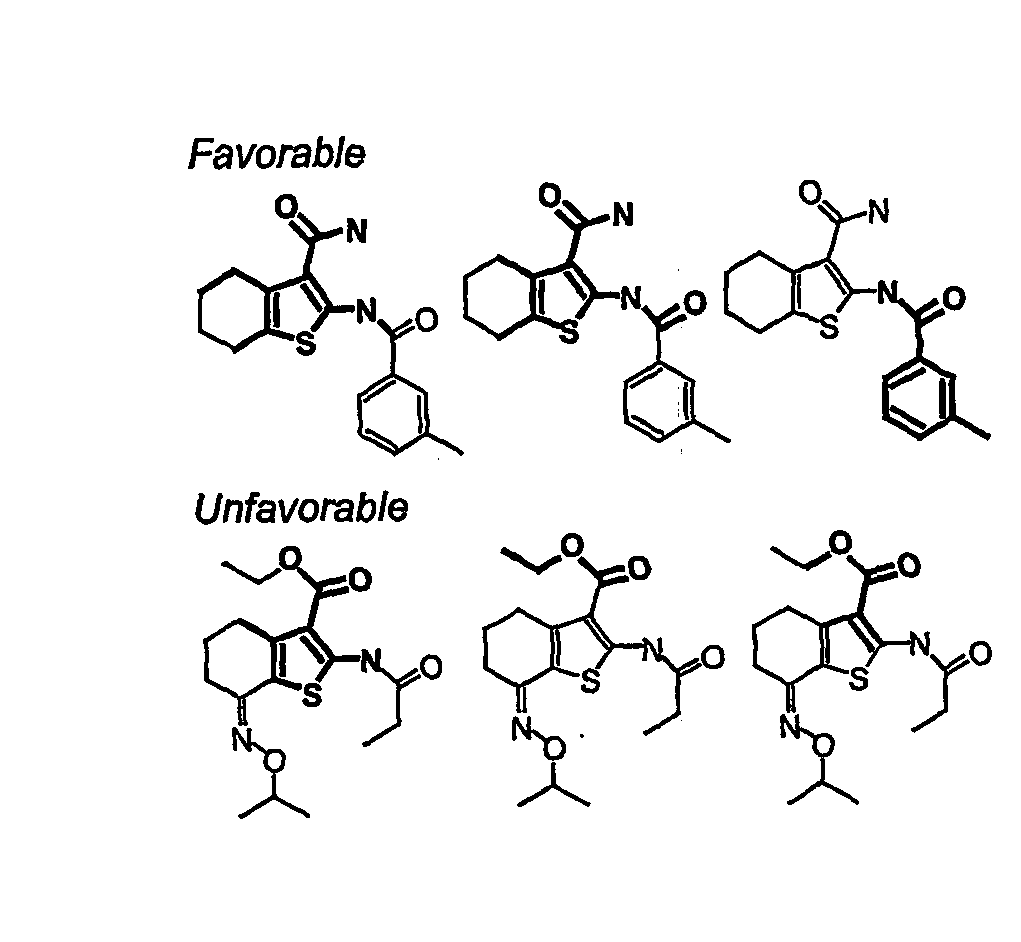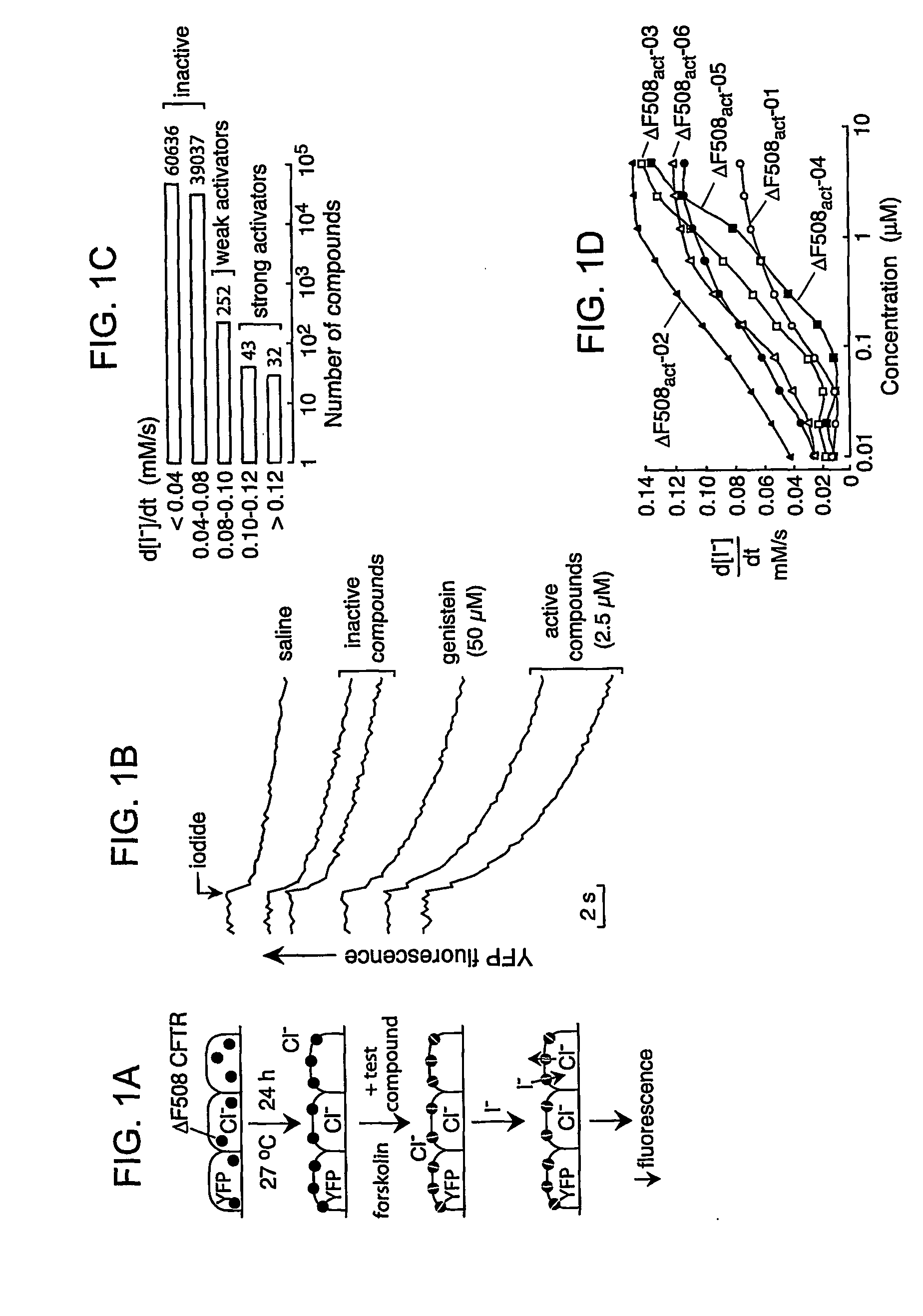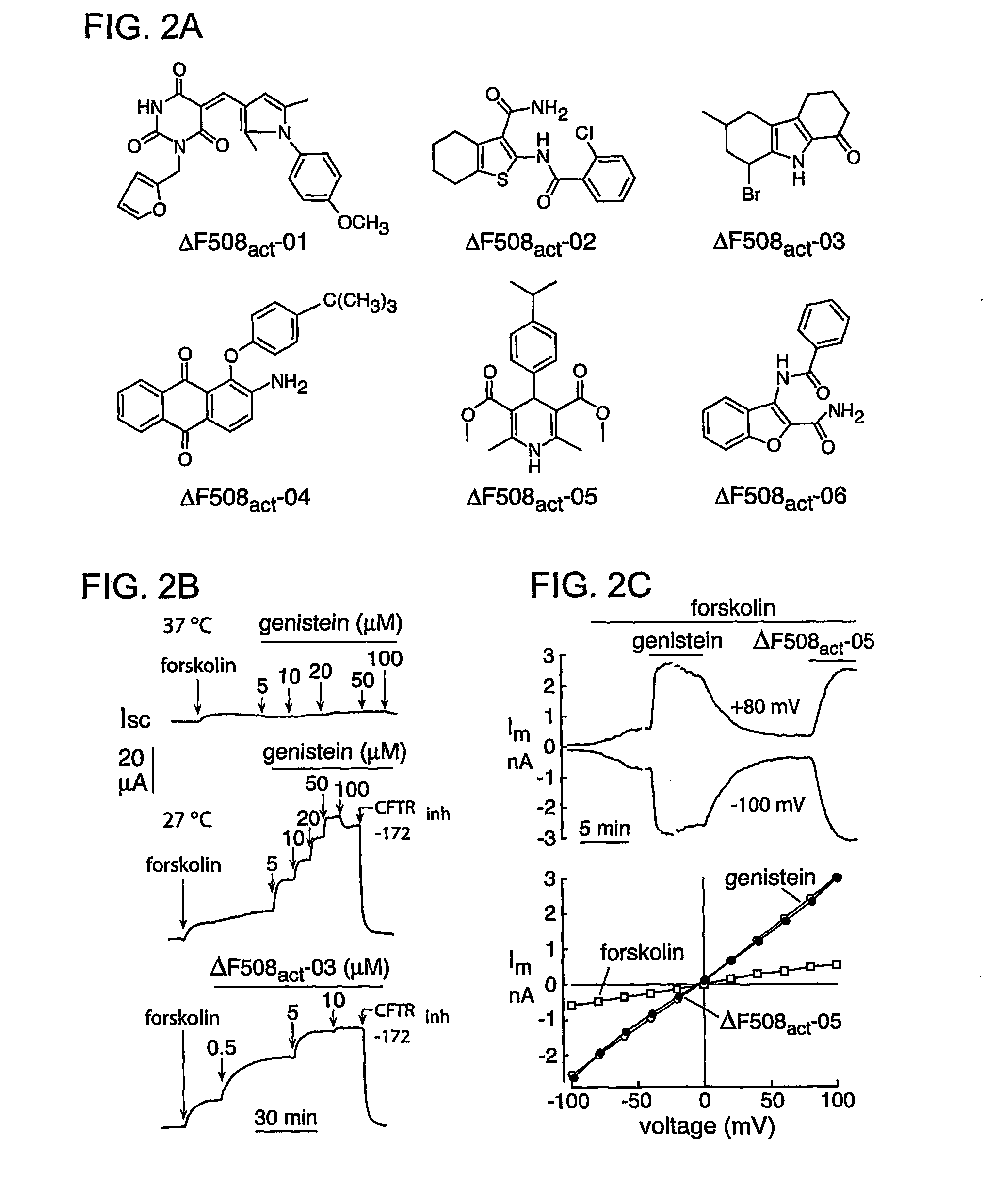Compounds Having Activity in Increasing Ion Transport by Mutant-Cftr and Uses Thereof
a technology of ion transport and compound, which is applied in the field of compound having activity in increasing ion transport by mutantcftr, can solve the problems of not offering clinically useful therapies, and progressing deterioration of lung function, so as to increase the ion transporting activity of said mutant cftr, increase the permeability of cells, and increase the rate of ion transpor
- Summary
- Abstract
- Description
- Claims
- Application Information
AI Technical Summary
Benefits of technology
Problems solved by technology
Method used
Image
Examples
example 1
Screening Assays
[0209] The high-throughput screen was designed to identify compounds that activated ΔF508-CFTR when expressed at the cell plasma membrane. FRT epithelial cells co-expressing ΔF508-CFTR and a high sensitivity green fluorescent protein-based halide indicator were incubated at 27° C. for 24 h to permit ΔF508-CFTR plasma membrane targeting (FIG. 1A). After washing, forskolin (20 μM) and test compounds (2.5 μM) were added to individual wells of 96-well plates. The I− influx assay was carried out ˜15 min later by measurement of the time course of decreasing YFP fluorescence after creation of an inwardly-directed I− gradient. A high concentration of forskolin was used to identify ΔF508-CFTR potentiators that may interact directly with ΔF508-CFTR rather than alter cAMP concentration. Since activation of CFTR requires cAMP stimulation, forskolin, an enhancer of cAMP, was added to the in vitro models in order to mimic the cellular cAMP stimulation.
[0210]FIG. 1B (top curve) s...
example 2
Short-Circuit Current Analysis
[0212] Short-circuit current analysis was done on each of these compounds to confirm bona fide activation of ΔF508-CFTR Cl− currents. Experiments were done after basolateral membrane permeabilization and in the presence of a transepithelial Cl− gradient, so that short-circuit current represents apical membrane Cl− current. Representative data are shown in FIG. 2B. Thirteen compounds increased short-circuit current to levels comparable to that of maximal genistein, but with Kd[0213] (1) 1-Furan-2-yhnethyl-5-[1-(4-methoxy-phenyl)-2,5-dimethyl-1H-pyrrol-3-ylmethylene]-pyrimidine-2,4,6-trione (ΔF508act-01) (“pyrimidinetrione”) [0214] (2) 2-(2-Chloro-benzoylamino)-4,5,6,7-tetrahydro-benzo[b]thiophene-3-carboxylic acid amide (ΔF508act-02) (“tetrahydrobenzothiophenes”); [0215] (3) 8-Bromo-6-methyl-2,3,4,9-tetrahydro-carbazol-1-one (ΔF508act-03) (“tetrahydrocarbazols”); [0216] (4) 2-Amino-1-(4-tert-butyl-phenoxy)-anthraquinone (ΔF508act-04) (“anthraquinone”); ...
example 3
Patch-Clamp Analysis
[0220] To assess the characteristics of the channels activated by ΔF508-CFTR potentiators, whole-cell recordings were done using the patch-clamp technique. FIG. 2C (top) shows membrane currents after forskolin alone and then forskolin with genistein demonstrating again the gating defect. After genistein washout, a ΔF508-CFTR potentiator gave similar membrane current. Current-voltage relationships generated in the presence of genistein or ΔF508-potentiators had the same linear ohmic behavior (FIG. 2C, bottom) as that found for activated wildtype CFTR. The currents showed no relaxation phenomena at positive or negative membrane potentials, providing evidence against the involvement of volume-sensitive or Ca2+-activated Cl− channels.
[0221] The six ΔF508-CFTR potentiators shown in FIG. 2A were tested for activation of wildtype and G551D-CFTR in transfected FRT cells. None of the compounds gave measurable G551D-CFTR activation at 10 μM in the presence of 20 μM forsk...
PUM
| Property | Measurement | Unit |
|---|---|---|
| molecular weight | aaaaa | aaaaa |
| temperature | aaaaa | aaaaa |
| w/w | aaaaa | aaaaa |
Abstract
Description
Claims
Application Information
 Login to View More
Login to View More - R&D
- Intellectual Property
- Life Sciences
- Materials
- Tech Scout
- Unparalleled Data Quality
- Higher Quality Content
- 60% Fewer Hallucinations
Browse by: Latest US Patents, China's latest patents, Technical Efficacy Thesaurus, Application Domain, Technology Topic, Popular Technical Reports.
© 2025 PatSnap. All rights reserved.Legal|Privacy policy|Modern Slavery Act Transparency Statement|Sitemap|About US| Contact US: help@patsnap.com



